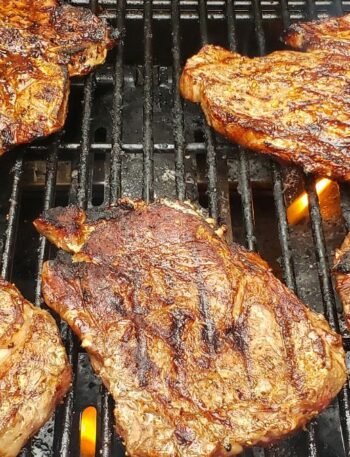Introduction to St. Patrick’s Day Culinary Traditions
- Introduction
- The History of St. Patrick’s Day
- Why St. Patrick’s Day Is Popular in the U.S.
- Food Traditions of St. Patrick’s Day
- Current Food Trends for St. Patrick’s Day
- Tips for Hosting a Memorable St. Patrick’s Day Celebration
- Recipes to Elevate Your St. Patrick’s Day Table
- Bringing It All Together: The Spirit of St. Patrick’s Day
Introduction
St. Patrick’s Day is a lively celebration of Irish culture, blending tradition with festive modern flair. From colorful parades to hearty feasts, this beloved holiday brings people together to honor heritage and enjoy shared moments. Whether you’re Irish by birth or simply in spirit, St. Patrick’s Day offers a warm invitation to celebrate history, community, and the flavors that make this day so special.
The History of St. Patrick’s Day
St. Patrick’s Day has a rich history that dates back to the 5th century when it began as a feast day honoring St. Patrick, the patron saint of Ireland. Born in Britain, Patrick was kidnapped and enslaved in Ireland as a teenager. After escaping, he returned as a missionary, credited with spreading Christianity throughout Ireland and using the shamrock to explain the Holy Trinity.
Originally a solemn religious observance, the holiday evolved over centuries. By the 17th century, it became a public celebration marked by feasts, festivals, and parades. In the U.S., Irish immigrants brought their traditions with them, transforming March 17th into a day of both cultural pride and communal joy.
Fun fact: The color blue was initially associated with St. Patrick’s Day. Green only became synonymous with the holiday in the late 18th century, symbolizing Ireland’s lush landscapes and the shamrock.
Why St. Patrick’s Day Is Popular in the U.S.
In the U.S., St. Patrick’s Day resonates as a celebration of heritage, unity, and festivity. Irish immigrants who arrived during the 19th century used the holiday to honor their roots while integrating into American society. Over time, the celebration expanded beyond Irish communities, becoming a nationwide festivity.
Today, St. Patrick’s Day embodies themes of inclusivity and joy. It’s a day where parades paint the streets green, pubs overflow with laughter, and families gather to share a meal. The holiday’s embrace of community spirit and cheerful indulgence aligns perfectly with American values of celebration and togetherness.
Did you know? The first St. Patrick’s Day parade in the U.S. took place in 1762 in New York City, led by Irish soldiers serving in the British army.
Food Traditions of St. Patrick’s Day
No St. Patrick’s Day celebration is complete without its iconic dishes. Traditional Irish foods reflect the country’s agricultural roots, with hearty meals designed to nourish and satisfy.
- Corned Beef and Cabbage: While not traditionally Irish, this dish became a staple among Irish Americans in the 19th century, as corned beef was a more affordable substitute for bacon.
- Irish Soda Bread: A simple, rustic bread made with baking soda instead of yeast, often served with butter or jam.
- Shepherd’s Pie: A comforting casserole of ground meat and vegetables topped with mashed potatoes.
- Colcannon: A creamy mashed potato dish mixed with cabbage or kale, symbolizing Ireland’s agrarian past.
These dishes tell a story of resilience and adaptability, celebrating the ingenuity of Irish cooking while honoring the flavors of the land.
Current Food Trends for St. Patrick’s Day
Modern St. Patrick’s Day menus blend tradition with innovation, reflecting contemporary tastes and dietary needs. Here are some trends redefining the holiday table:
- Plant-Based Twists: Vegan versions of shepherd’s pie and Irish stew are gaining popularity, using lentils, mushrooms, and plant-based proteins.
- Dessert Extravaganzas: Green velvet cupcakes, shamrock-shaped cookies, and Guinness-infused brownies add a sweet touch to celebrations.
- Craft Cocktails: Irish whiskey sours and Bailey’s espresso martinis are elevating St. Patrick’s Day libations.
- Meal Kits and DIY Options: Pre-prepared kits for Irish classics make it easier than ever to host a themed dinner party at home.
Social media has also played a role, inspiring creative green-themed charcuterie boards and Pinterest-worthy desserts that bring a touch of whimsy to the holiday.
Tips for Hosting a Memorable St. Patrick’s Day Celebration
Planning the perfect St. Patrick’s Day gathering doesn’t have to be daunting. Here are some tips to help you create a celebration that your guests will remember:
- Set the Scene: Decorate with green table linens, shamrock garlands, and gold accents to evoke the Irish spirit.
- Plan a Festive Menu: Offer a mix of traditional dishes like corned beef and cabbage alongside modern crowd-pleasers like Irish cheddar sliders.
- Accommodate All Diets: Include vegetarian and gluten-free options to ensure everyone feels welcome.
- Add Interactive Elements: Host an Irish trivia game or set up a DIY soda bread station for guests to take home their creations.
- Toast with Style: Create a signature drink station featuring Irish coffee, Guinness, and non-alcoholic green punch for younger guests.
Recipes to Elevate Your St. Patrick’s Day Table
Take your St. Patrick’s Day menu to the next level with these standout recipes:
- Classic Corned Beef and Cabbage: Tender, flavorful, and perfect for a family feast.
- Irish Soda Bread with Raisins: A touch of sweetness makes this bread irresistible.
- Guinness Beef Stew: Rich and hearty, with deep flavors from the iconic stout.
- Bailey’s Cheesecake: A creamy dessert infused with the essence of Ireland.
Explore the full recipe collection on our website to find more ideas for appetizers, mains, and desserts that will wow your guests.
Bringing It All Together: The Spirit of St. Patrick’s Day
St. Patrick’s Day is a celebration of culture, community, and cuisine. It’s a day to honor traditions while embracing new ones, to gather with loved ones, and to share the simple joys of good food and good company. Whether you’re enjoying a traditional Irish meal or experimenting with modern twists, the holiday reminds us of the power of connection and gratitude.
What are your favorite St. Patrick’s Day traditions? Share your memories and recipes in the comments below, and don’t forget to subscribe for more holiday inspiration and delicious recipes throughout the year!
Discover more from In The Kitchen With Vic
Subscribe to get the latest posts sent to your email.






